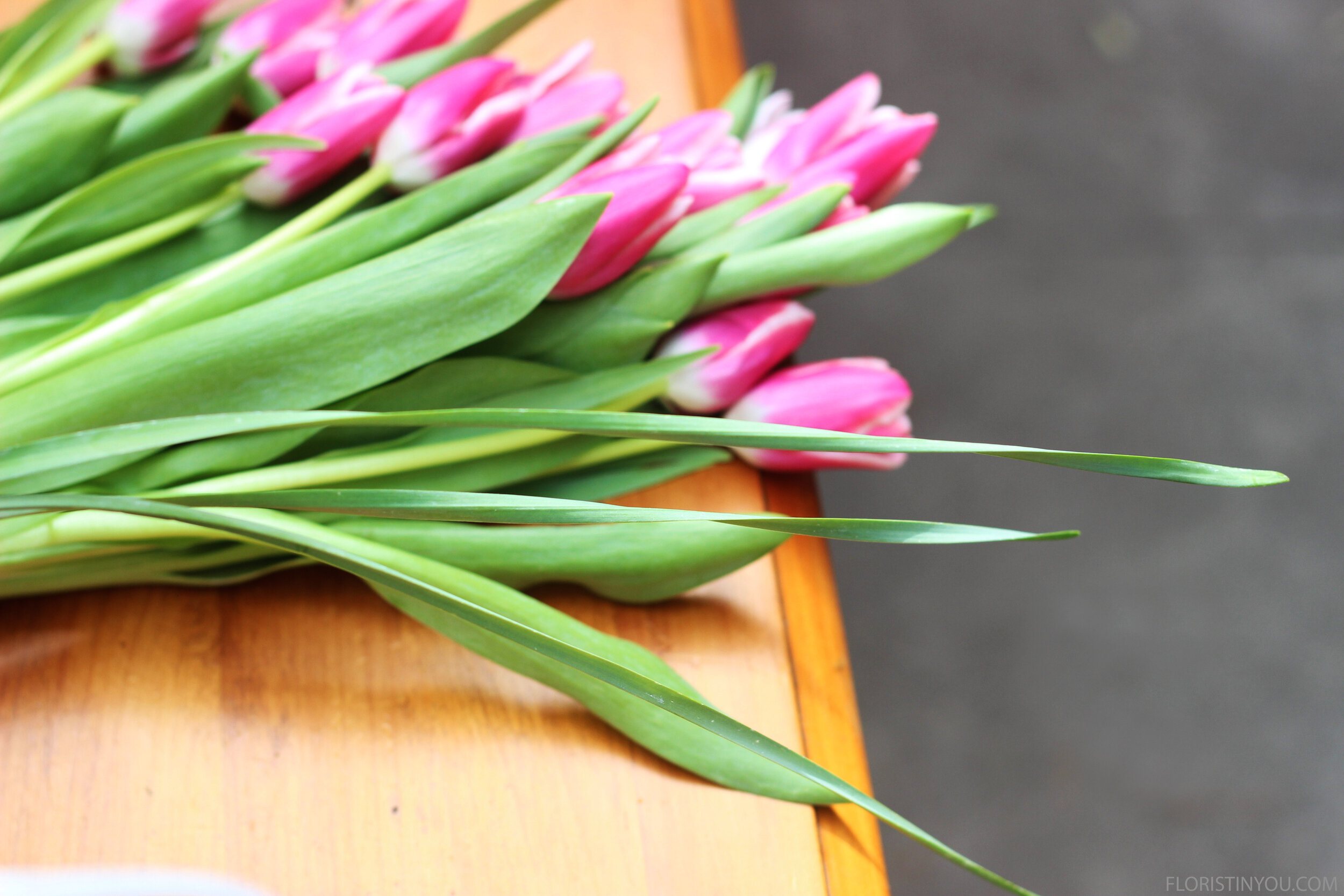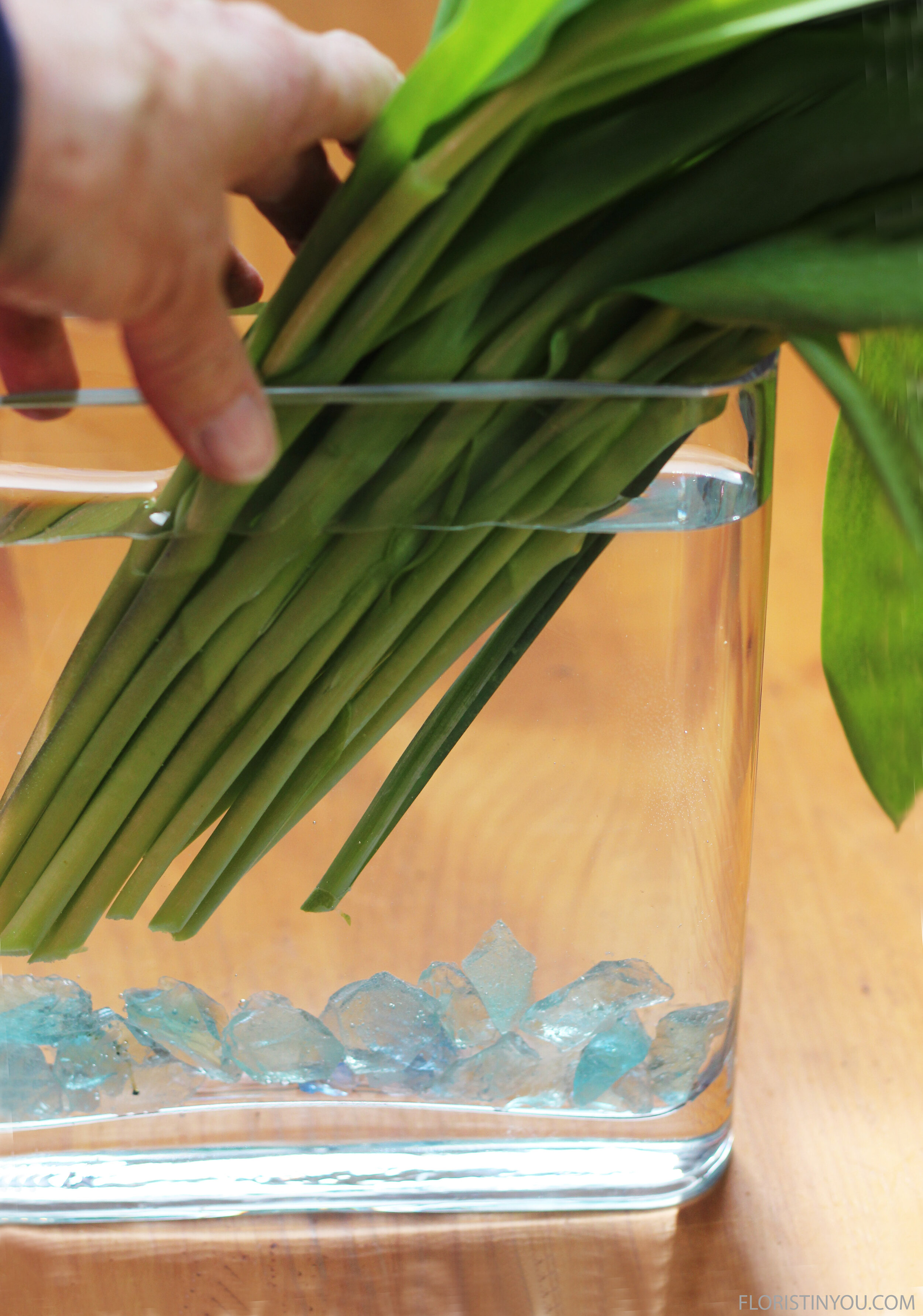Spring Tulips
What you need:
1 Doz. Tulips
3 Paperwhite leaves (stender green leaves)
2 hands full of light blue sea glass (purchase similar here)
rectangular vase (rounded edges) 8 inches H, Opening 7 inches x 1.75 inches deep (purchase here)
30.5 inches 1.5 inch wide wired French Ribbon (purchase here)
1 packet of floral food (purchase here)
Supplies Used:
sharp fabric scissors
sharp pruning shears (found here)
Steps: 5
Flower Cost: $4.99
Rated: Easy Arrangement
When we think of spring we always think of tulips. Tulips typically bloom in the Netherlands between March 21st through May 10. Few people know that tulips were cultivated in Persia in the tenth century and their name is thought to come from the Persian word for turbin. Most people associate tulips with Denmark, but tulips originated in a wide band from the Caspian Sea in Southern Europe to China and Mongolia, and from Afghanistan and Iran to Russia (the same area that gave us apples.) Tulips grew wild in the Tien Shan Mountains, which are northwest of Himalayas and have peaks as high as 24,406 feet high. They were probably cultivated in Persia in the 900’s and later cultivated in Istanbul Turkey. Tulips arrived in Western Europe 600 years later after ambassadors saw them in the courts of the Ottoman Empire. After that, they were grown extensively in the Netherlands and have become associated with the Netherlands ever since.
Tulips need a cold winter. (Remember where they came from?) They need a big chill…4 weeks before they will bloom. So, if you are in Southern California you can have them chill in the freezer for 6 weeks before planting. For directions here’s a great article: https://www.ehow.com/how_4559130_grow-tulips-southern-california.html
This arrangement also has a few snips of the long thin leaves from Paperwhites, which I cut from my garden. This helps lengthen out the arrangement and give the stems more of a curve. Enjoy working with these flowers. The positive energy will be good for you. If you have your supplies, let’s begin.
FLOWER TIP: SHARP IKEBANA SHEARS A MUST. Avoid touching tulip leaves. They tend to rip and bruise. The stems are also fragile and break easily. Use sharp pruning shears, like Ikebana scissors shown above in link, to cut the stems as regular shears will mash them.












